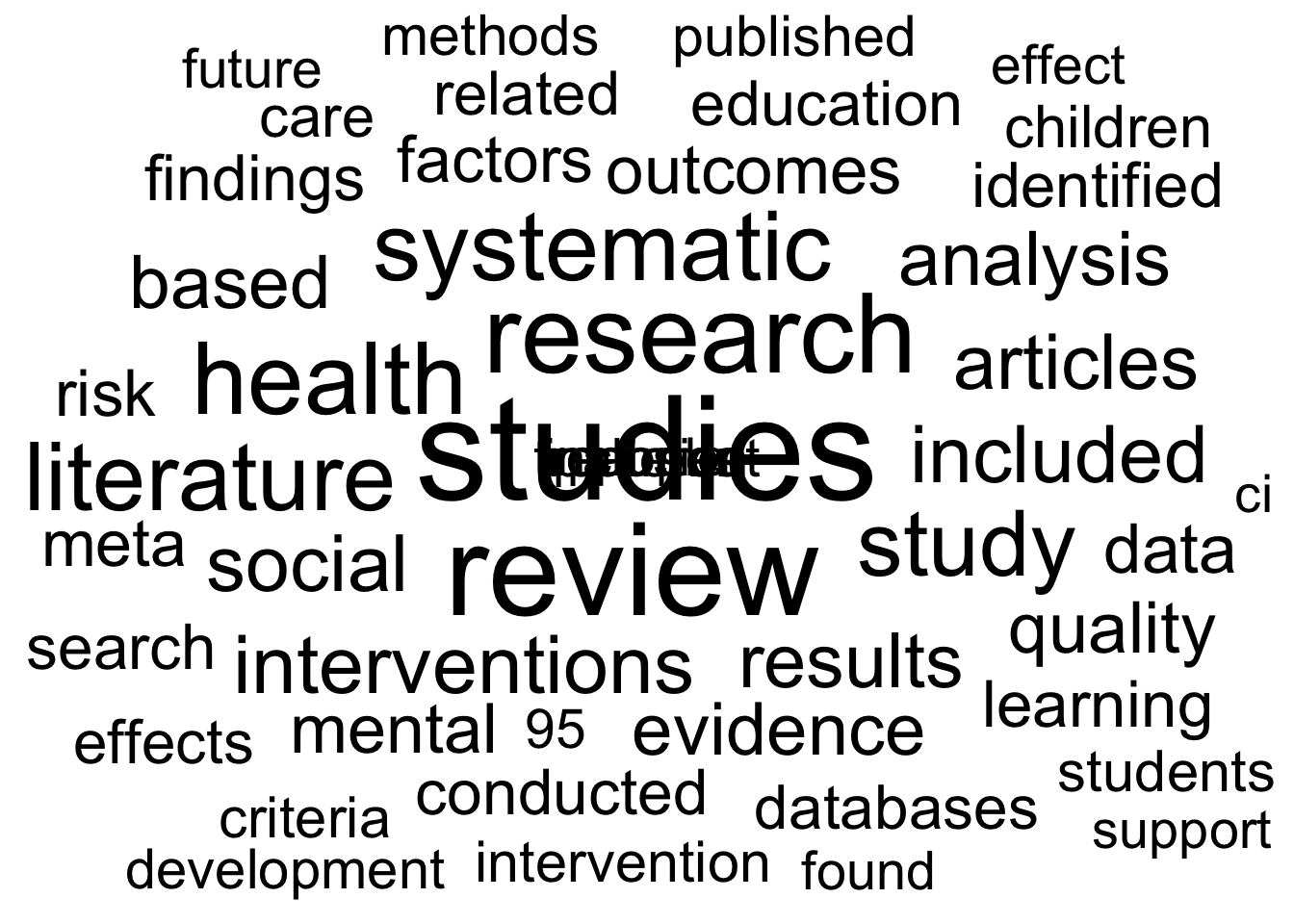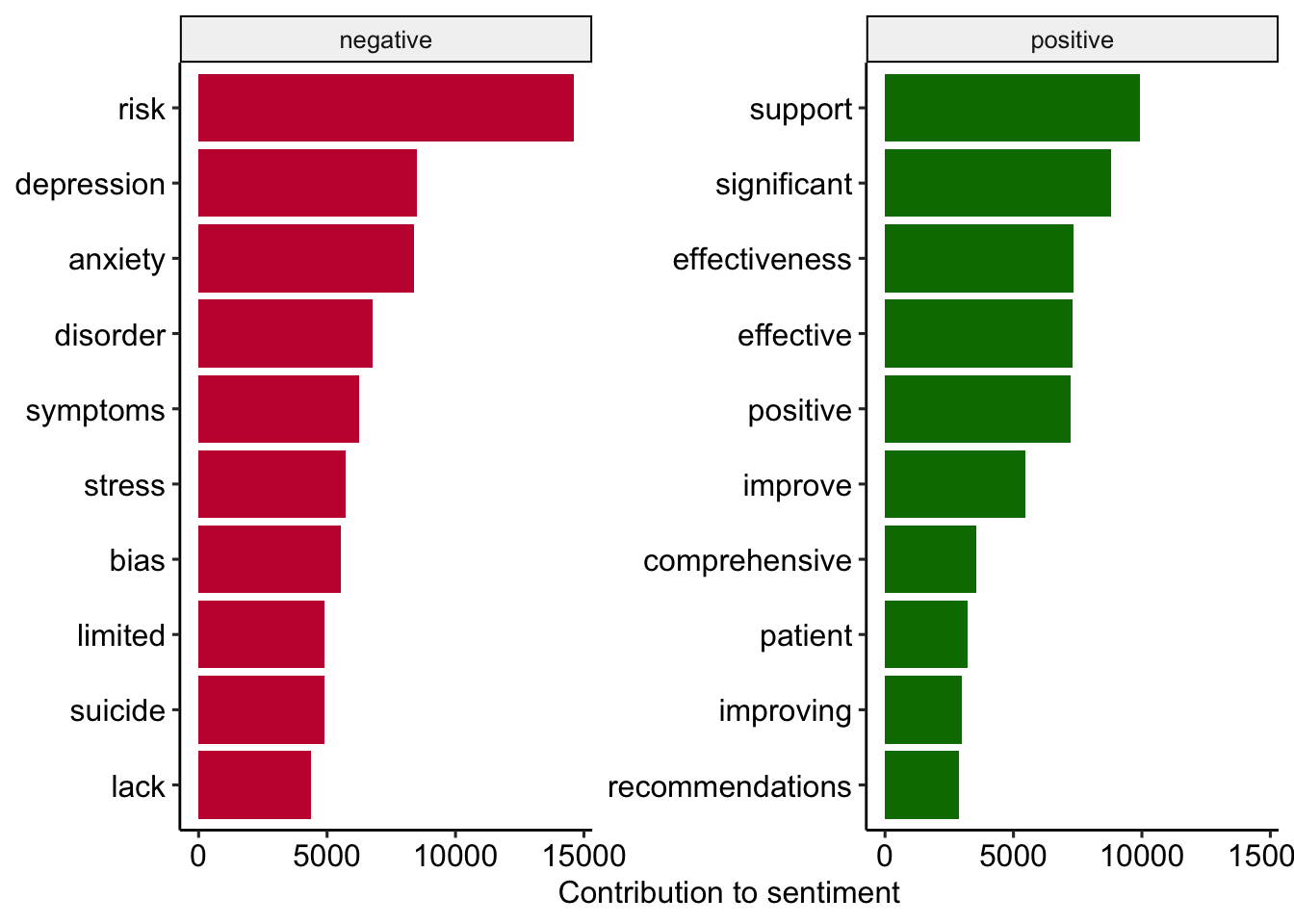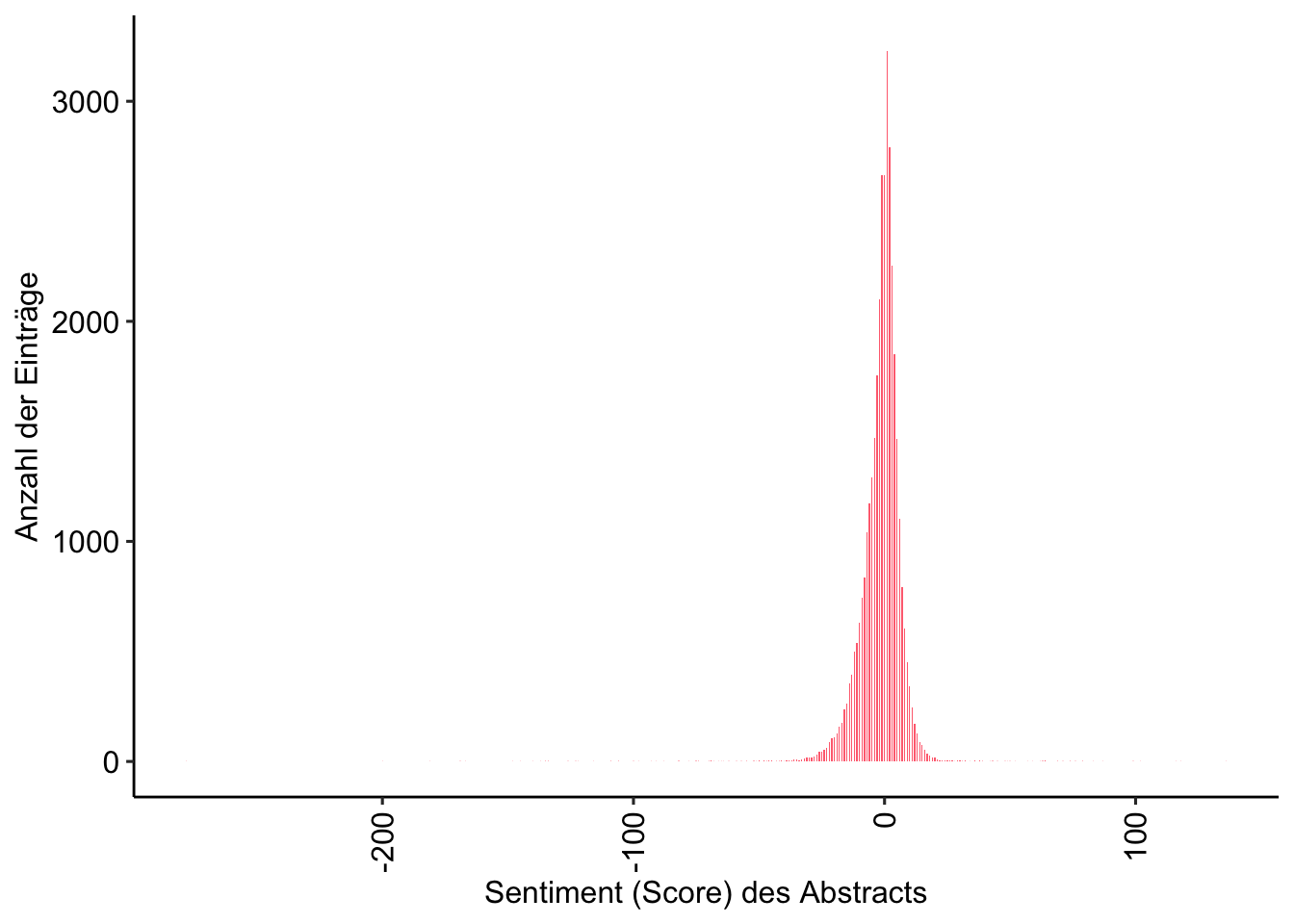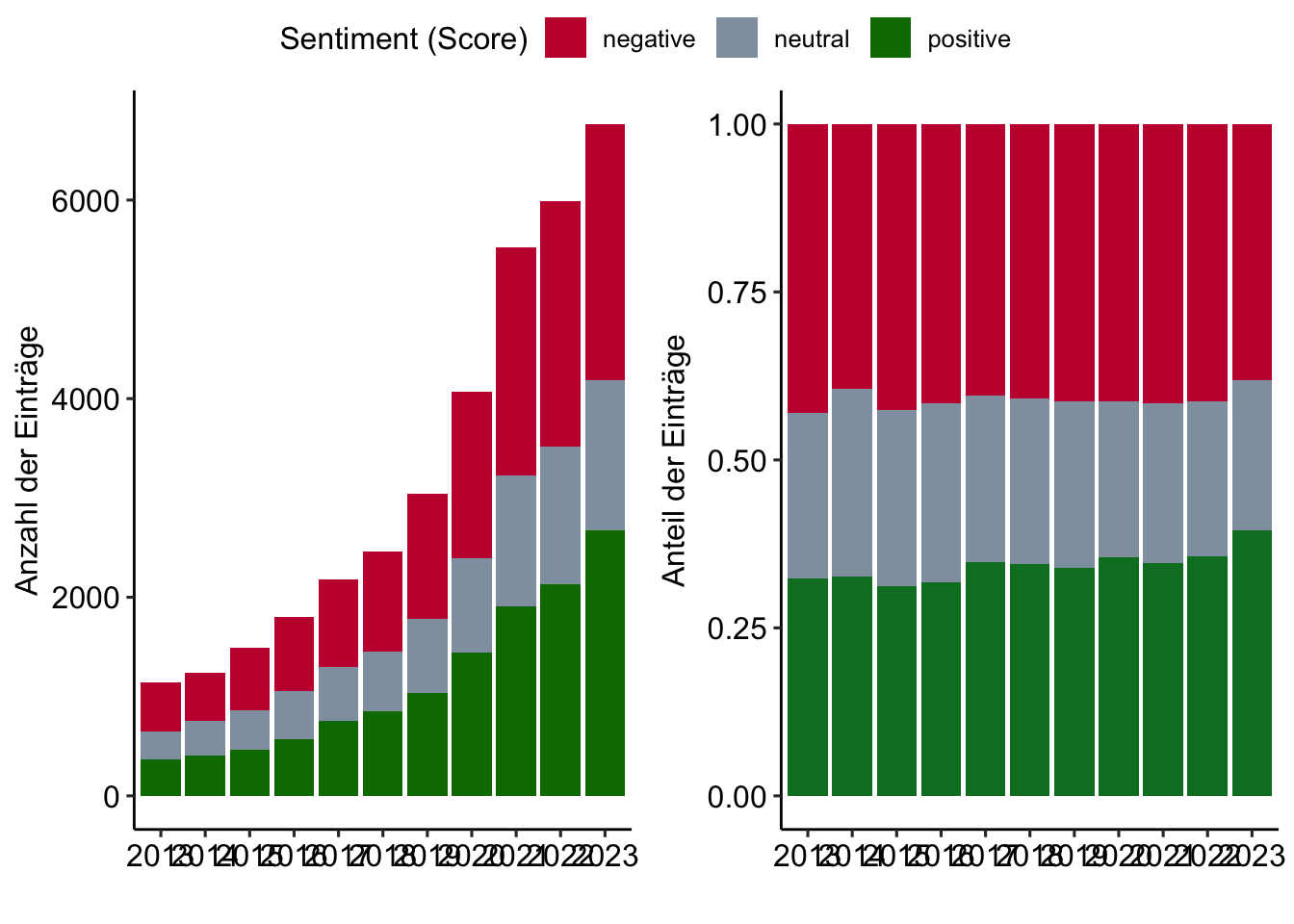if (!require("pacman")) install.packages("pacman")
pacman::p_load(
here, qs, # file management
magrittr, janitor, # data wrangling
easystats, sjmisc, # data analysis
gt, gtExtras, # table visualization
ggpubr, ggwordcloud, # visualization
tidytext, widyr, # text analysis
openalexR,
tidyverse # load last to avoid masking issues
)Text processing in R
Session 08 - Showcase
Preparation
Codechunks aus der Sitzung
Erstelle Subsample
review_subsample <- review_works_correct %>%
# Eingrenzung: Sprache und Typ
filter(language == "en") %>%
filter(type == "article") %>%
# Datentranformation
unnest(topics, names_sep = "_") %>%
filter(topics_name == "field") %>%
filter(topics_i == "1") %>%
# Eingrenzung: Forschungsfeldes
filter(
topics_display_name == "Social Sciences"|
topics_display_name == "Psychology"
)Subsample im Zeitverlauf
review_works_correct %>%
mutate(
included = ifelse(id %in% review_subsample$id, "Ja", "Nein"),
included = factor(included, levels = c("Nein", "Ja"))
) %>%
ggplot(aes(x = publication_year_fct, fill = included)) +
geom_bar() +
labs(
x = "",
y = "Anzahl der Einträge",
fill = "In Subsample enthalten?"
) +
scale_fill_manual(values = c("#A0ACBD50", "#FF707F")) +
theme_pubr() 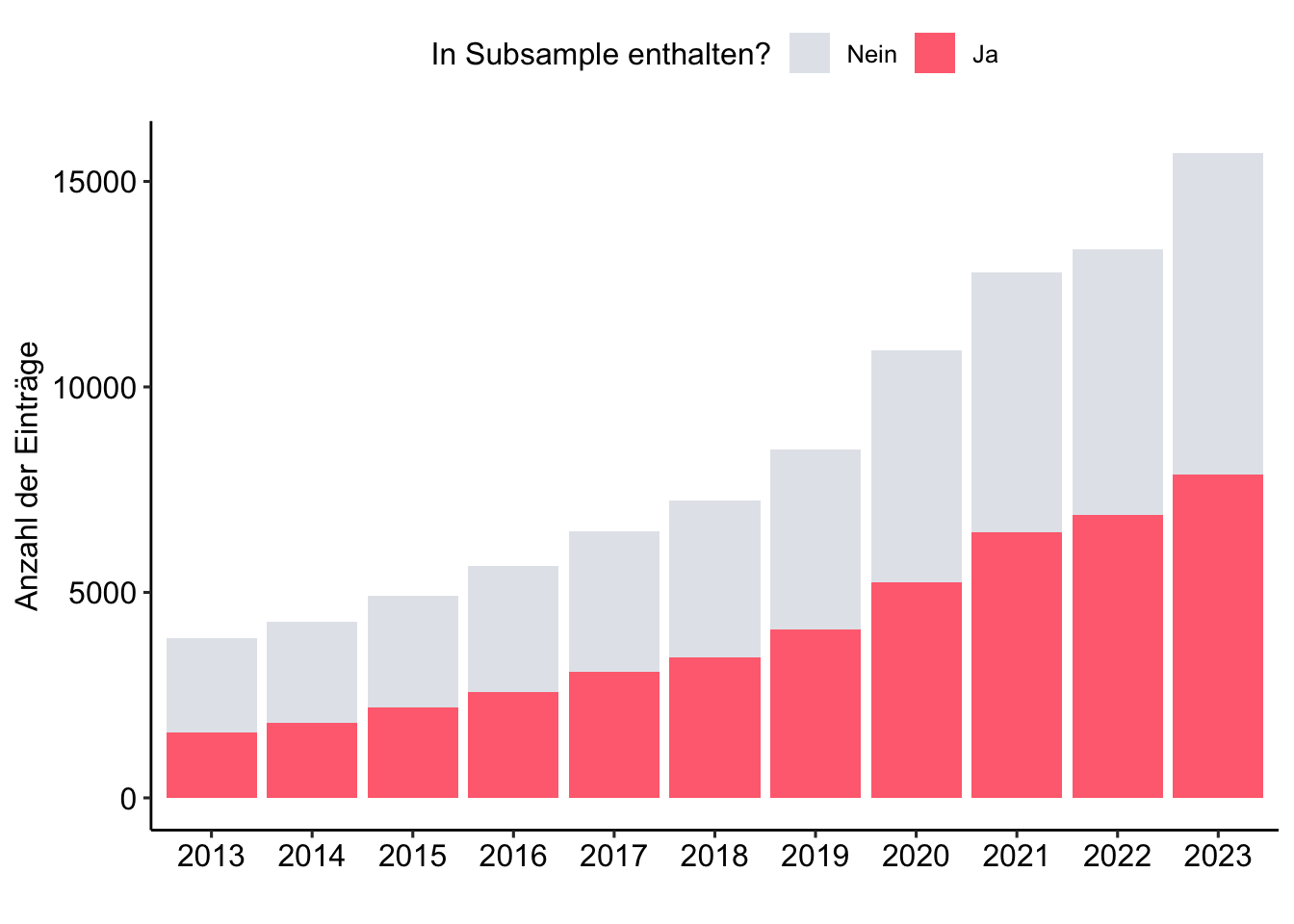
Tokenization der Abstracts
# Create tidy data
review_tidy <- review_subsample %>%
# Tokenization
tidytext::unnest_tokens("text", ab) %>%
# Remove stopwords
filter(!text %in% tidytext::stop_words$word)
# Preview
review_tidy %>%
select(id, text) %>%
print(n = 10)# A tibble: 4,880,965 × 2
id text
<chr> <chr>
1 https://openalex.org/W4293003987 5
2 https://openalex.org/W4293003987 item
3 https://openalex.org/W4293003987 world
4 https://openalex.org/W4293003987 health
5 https://openalex.org/W4293003987 organization
6 https://openalex.org/W4293003987 index
7 https://openalex.org/W4293003987 5
8 https://openalex.org/W4293003987 widely
9 https://openalex.org/W4293003987 questionnaires
10 https://openalex.org/W4293003987 assessing
# ℹ 4,880,955 more rowsVergleich eines Abstraktes in Rohform und nach Tokenisierung
review_subsample$ab[[1]][1] "The 5-item World Health Organization Well-Being Index (WHO-5) is among the most widely used questionnaires assessing subjective psychological well-being. Since its first publication in 1998, the WHO-5 has been translated into more than 30 languages and has been used in research studies all over the world. We now provide a systematic review of the literature on the WHO-5.We conducted a systematic search for literature on the WHO-5 in PubMed and PsycINFO in accordance with the PRISMA guidelines. In our review of the identified articles, we focused particularly on the following aspects: (1) the clinimetric validity of the WHO-5; (2) the responsiveness/sensitivity of the WHO-5 in controlled clinical trials; (3) the potential of the WHO-5 as a screening tool for depression, and (4) the applicability of the WHO-5 across study fields.A total of 213 articles met the predefined criteria for inclusion in the review. The review demonstrated that the WHO-5 has high clinimetric validity, can be used as an outcome measure balancing the wanted and unwanted effects of treatments, is a sensitive and specific screening tool for depression and its applicability across study fields is very high.The WHO-5 is a short questionnaire consisting of 5 simple and non-invasive questions, which tap into the subjective well-being of the respondents. The scale has adequate validity both as a screening tool for depression and as an outcome measure in clinical trials and has been applied successfully across a wide range of study fields."review_tidy %>%
filter(id == "https://openalex.org/W4293003987") %>%
pull(text) %>%
paste(collapse = " ")[1] "5 item world health organization index 5 widely questionnaires assessing subjective psychological publication 1998 5 translated 30 languages research studies world provide systematic review literature 5 conducted systematic search literature 5 pubmed psycinfo accordance prisma guidelines review identified articles focused aspects 1 clinimetric validity 5 2 responsiveness sensitivity 5 controlled clinical trials 3 potential 5 screening tool depression 4 applicability 5 study fields.a total 213 articles met predefined criteria inclusion review review demonstrated 5 clinimetric validity outcome measure balancing unwanted effects treatments sensitive specific screening tool depression applicability study fields high.the 5 short questionnaire consisting 5 simple invasive questions tap subjective respondents scale adequate validity screening tool depression outcome measure clinical trials applied successfully wide range study fields"Count token frequency
# Create summarized data
review_summarized <- review_tidy %>%
count(text, sort = TRUE)
# Preview Top 15 token
review_summarized %>%
print(n = 15)# A tibble: 122,148 × 2
text n
<chr> <int>
1 studies 73398
2 review 57878
3 research 42689
4 health 35108
5 systematic 32431
6 literature 31374
7 study 29012
8 interventions 22731
9 included 21987
10 social 21528
11 articles 20631
12 results 20166
13 analysis 19624
14 based 18929
15 evidence 18545
# ℹ 122,133 more rows

